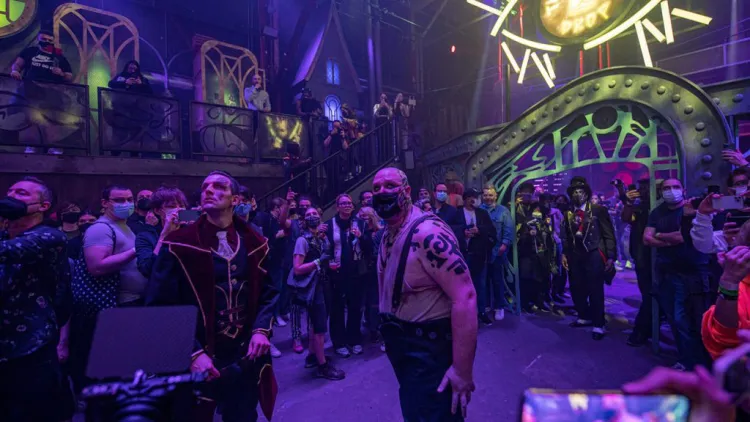The Riot Games Arena Emerges: A Hub of Innovation and Diversity in Esports
The revamped Riot Games Arena, formerly known as LEC Studio, has undergone a remarkable transformation, establishing itself as a central hub for the diverse range of esports under Riot Games. Situated in Berlin, Germany, this new arena, which took less than a year to materialize, represents a significant leap forward for Riot Games in the esports landscape. Alberto Guerrero, Head of Esports EMEA at Riot Games, shared exclusive insights in an interview with Esports Insider, detailing the inception of the design early last year, with physical work commencing around September 2023, following the LEC Season Finals in Montpellier. The doors officially open on January 13th.
Guerrero sheds light on the strategic decision to centralize all esports events within the Riot Games Arena. Instead of focusing solely on the success of League of Legends, he emphasizes the organic evolution of Riot's titles like VALORANT and Teamfight Tactics in the EMEA region. Within three years, VALORANT has become a success, and the auto battler genre is experiencing rapid growth. Guerrero notes the need for "proper facilities" to support this growth, emphasizing that the arena's transformation extends beyond physical renovations, embodying Riot's commitment to a game-agnostic approach.
Practically, the Riot Games Arena demonstrates impressive flexibility, allowing quick transitions between different games or esports leagues. The venue can adjust stage setups, graphics, and overall infrastructure to cater to the specific requirements of various events efficiently. This adaptability positions the arena to host tournaments for multiple games, accommodating the diverse needs of different titles, competitions, and brands.
The arena's capability to effortlessly switch between esports leagues is highlighted by Guerrero, who reveals that the venue can fully transform its layout and appearance to suit a different brand in just one hour. This technological prowess not only makes the Riot Games Arena ready for any esports competition in the future but also opens avenues for hosting "alternative events" connected to other products in Riot's diverse portfolio, such as the animated series Arcane.

While Guerrero refrains from disclosing specific commitments regarding Arcane or other events, he acknowledges the venue's potential to offer a compelling experience beyond esports. This prospect raises questions about capacity, and Guerrero exclusively reveals that the updated venue has a seating capacity of 210, representing a roughly 20% increase over its original capacity. Addressing the challenge of audience size, Guerrero emphasizes prioritizing the millions of fans enjoying broadcasts from home.
The design of the Riot Games Arena meticulously balances the desire for a live audience experience with the broader needs of online viewership, maintaining a focus on broadcast quality and fan experience from home. Guerrero underscores the immersive nature of the new arena, promising a more comfortable and vibrant experience. Fan-focused upgrades include amphitheater-style seating with new seats, a broadcast desk area facilitating interaction between talent and attending fans, and a dedicated tunnel for player-fan interaction after matches.

In addition to catering to fans, the design considerations extend to players and teams. The arena provides accommodation facilities for player preparation during their stay, along with dedicated areas for content creation and media management. The inclusion of three dedicated broadcast rooms supporting three languages simultaneously, co-streaming booths, LED screens, and cutting-edge theatrical and broadcast gear ensures the arena is equipped for top-notch productions.
Riot Games has actively embraced co-streaming over the past three years, and the addition of two dedicated booths in the remodeled arena reinforces the company's commitment to enhancing the viewer experience and increasing event audience size. The selection process for co-streamers involves leveraging Riot Games' network of Riot Partners regionally, with LEC teams having the right of first refusal on the booths. Guerrero emphasizes the offer to teams while highlighting the need for them to bind their brand with a specific streamer.
The presence of in-house streamers and content creators within teams, as seen with Karmine Corp and its founder Kamel ‘Kameto’ Kebir, plays a pivotal role in fostering fan loyalty and creating a passionate live supporter base. Despite Riot Games not disclosing the cost of the venue renovation, it reflects a substantial investment, particularly notable during a period of financial caution in the esports industry.
The esports landscape experienced significant turbulence in 2023, marked by layoffs and the exit of major organizations. Amid this uncertainty, the revitalization of the EMEA league may inject new life into the scene, potentially yielding a return on investment for Riot Games and its league stakeholders. The transformation of the former LEC Studio into the Riot Games Arena is complete, symbolizing a new era for the esports landscape in the region, with doors set to open on January 13th.


EGAMERSW - get 11% Deposit Bonus + Bonus Wheel free spin
EXTRA 10% DEPOSIT BONUS + free 2 spins
BEST ODDS, free daily case, free rains, daily, weekly and monthly rakeback!

Sign up now and get 2 FREE CASES + 5$ Bonus
3 Free Cases + 100% up to 100 Coins on First Deposit



Comments